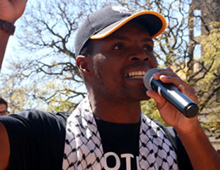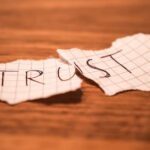[intro]An exhibition at the Johanness Stegmann Gallery in Bloemfontein featured the works of renowned artists, poets and social activists to create a collection of thought provoking images which reflect and respond to the values and ideals instilled in the South African Bill of Rights.[/intro]
Albie Sachs (2015)
The Art of Human Rights Print Portfolio is an of Art for Humanity (AFH) initiative. 29 South African artists and 27 poets have created works that reflect and respond to the values and ideals instilled in the South African Bill of Rights, which is found in Chapter Two of the Constitution.
The artists include Busiswa Gqulu; Andries Botha; Kobus Moolman and Zanele Muholi and the articles from prominent social activists including Ahmed Kathrada, Mike Van Graan and Justice Edward Cameron engage with 27 clauses of the Bill of Rights, looking at socio-economic issues still prevalent in our democracy, while aiming to re-inspire and communicate the meaning and spirit of Human Rights.
The collection also calls attention to issues that threaten our democracy such as racism, poverty, poor education, lack of access to healthcare and other scourges.
Upon approach of the current exhibition, one picks up on a sense of reflective criticism. Different from the first Art of Human Rights print portfolio in 1996, which looked at the post-apartheid South Africa anew with a hopefulness for the new democracy. The contrast created by the difference in artistic opinion should not be taken lightly, it requires an individual revaluation of the progress made since 1994. The exhibition takes you on an emotional journey of thought provoking images and supporting words in the form of poetry.
Although most of the poets and artist worked separately, only working with the same act as a concept, there is a thematic continuation in all the work. Starting off with Act 9 of the constitution, the human right to equality, is perhaps the most relevant of all the acts to a modern South Africa. We preach to be a unified country, we are firmly grounded in our idealistic application of equality for all citizens and we all love saying we do not discriminate against other people.
Nonetheless, the undeniable presences of discrimination linger in the dark corners of our country and we refuse to turn our gaze upon it.
Women are still objectified, they still struggle to get promoted or even just make the same salary as men. Racism is still so prevalent within our media, school and universities. White privilege is not something from the past, it is still applicable. The LGBTIQ communities around South Africa are regular victims of discrimination. The list goes on and I find myself feeling similar to these artists, a cocktail of borderline cynicism and a critical view of our so-called democracy.
Like most art, there will always be specific pieces that simply resonate with you as an individual and for me it was the poem by Vangi Ganstho assigned to article 18, the freedom of association. I am a remarkably emotional being and find myself often moved by the right words in the right order and Ganstho got it just right. I have struggled with acceptance from my loved ones on the basis of my life choices and identity for most of my life and I still do. This poem, for me, speaks of the unconditional support we as human beings inherently long for.
– Vangi Gantsho
I believe a critical view on society is a necessity, the need to reflect on one’s environment and more importantly on oneself is important to achieve the dreams laid out in our constitution. I am left with one question: if society is the sick one, insane and perverted. Where does that leave the sane?
Images courtesy of Arts for Humanity. Cover image, Zanele Muholi: Isililo: Access to courts (article 34) This work refers to the epidemic of hate crimes and brutal murders of black lesbians.










